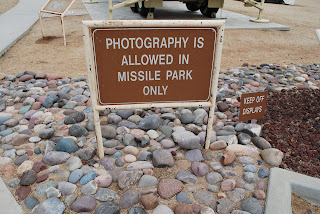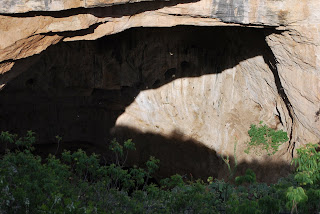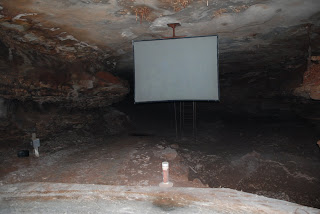

8. the sheetrock-white sands of the Tularosa Basin
From the westernmost highway passes of the Sacramento Mountains we could see the twinkle of white gypsum sands huddled in the great expanse of the Tularosa Basin in South-Central New Mexico.




Gypsum is unique in that it dissolves in water. In most instances it ultimately flows with the watershed to the sea, but in the case of the Tularosa Basin, the gypsum carries down from the the Mountains and is trapped between the San Andreas and the Sacramento ranges with no running river to ride seaward. So the Gypsum settles in desert lakes which annually sun-dry. It crystallizes jagged formations in the dry desert lakebeds, weathering breaks the crystals down into sand and the strong winds carry the sand to form dunes. The dunes perpetually shift and change shape, some shifting as much as 30 feet in a year.



Corey and I walked barefooted over the white among the pale lizards, the yellow blooming yuccas, the grasses, and black beetles to our inter-dunal campspot. The sun fell and the sand cooled. The awkward quality of lightedness distorted space and perception as we climbed up and bounded down the dunes. The dune peaks bled into the clouds and any sense of direction was governed by the Sacramento ridges visible to the east. The moon nearly full'd. The Whiteness of the sand , the few clouds, and the moonlight more bent our perceptions. What seemed 100 yards could be 30 feet. The dune horizons seemed to grow interminably as we climbed up and over them.


We camped in the approximate 75 square yard interdunal home of an endangered burrowing owl. We had set camp near its yucca root burrow. It flew about and stood the dune peaks sounding its sound of agitation most of the evening.

Some Grad students from Idaho were capturing the white dune lizards when we walked out to the truck on the morning of June 5th. “there are a species outside the dunes of a dark color, we clip their tales and do DNA tests, the white lizards adapted their white color to fit this microclimate in just 6,000 years.”

The Tularosa white sands also hold the military base and white sands missle range. Another post...





































